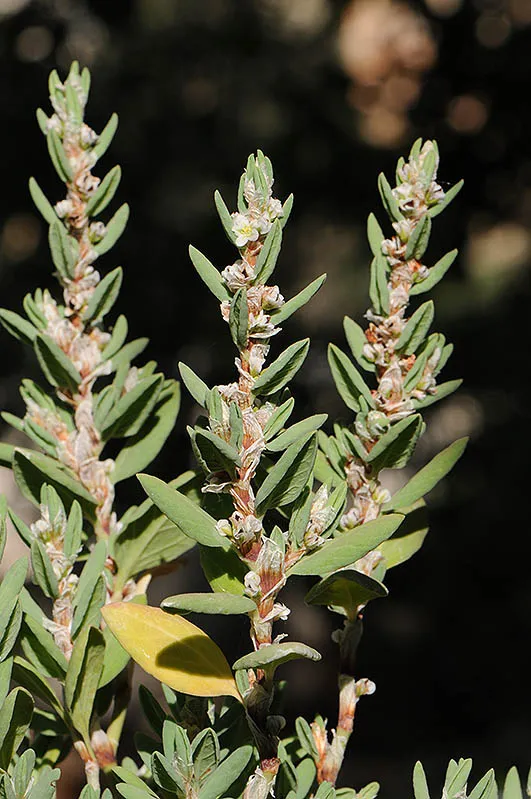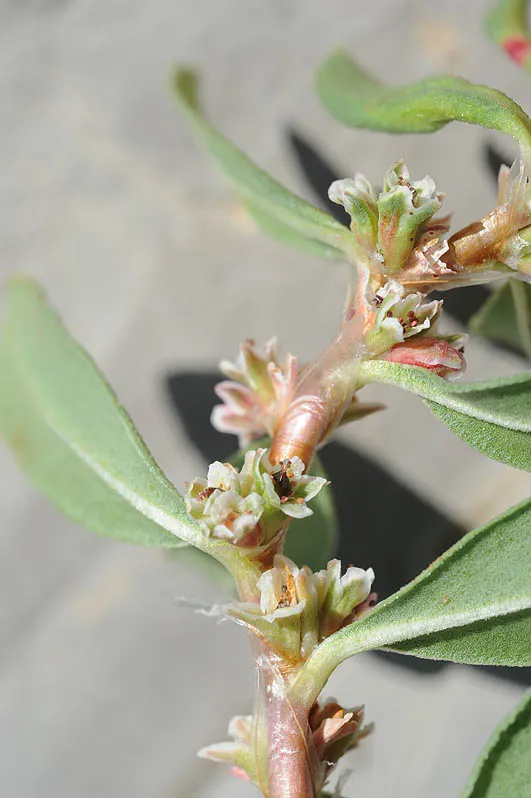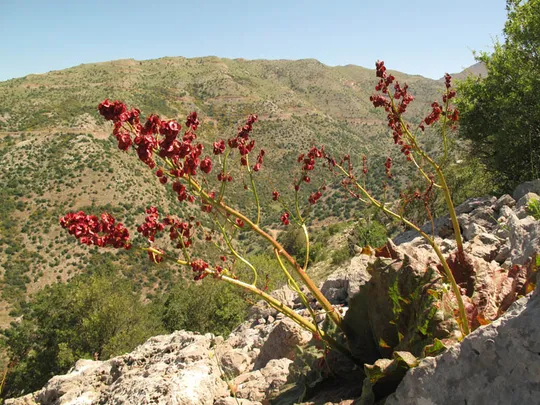Spiny Atraphaxis
Atraphaxis spinosa
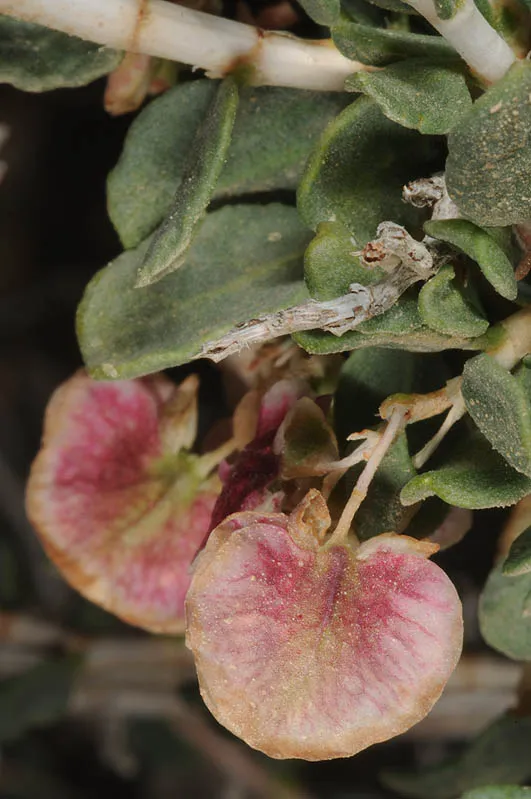
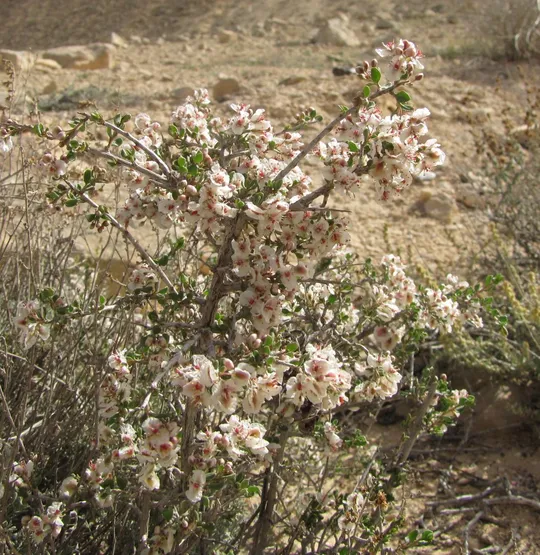
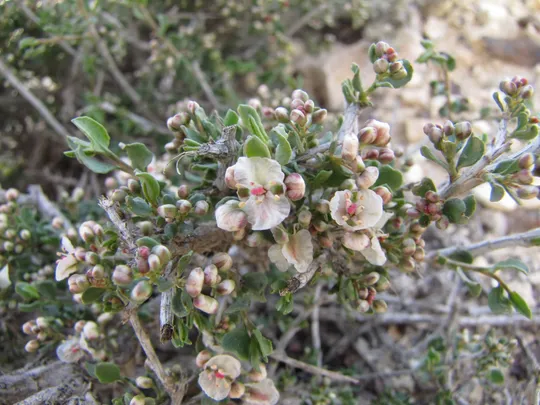
Atraphaxis spinosa grows in two
regions: the Northern Negev and the Negev Highlands on three sites, although it
is estimated that there are ten sites. In the Northern Negev A. spinosa
was collected at Sde Boker (A. Danin) and observed in Wadi Havarim (R.
Frumkin); in the Negev Highlands it grows in the Arod Pass, where it was
observed several times in recent years, but was not found on Mount Ramon, where
A. Zehavi collected it in 1950. Rebecca Dolberger also collected the species in
the southern Negev in 1954, on the way to the Oded Wells, but there is no current evidence of its existence there.
Rocky-stony slopes in the high desert, in scattered
vegetation of Artemisia sieberi and plants of the Chenopodiacae family.
According to the Flora Palaestina, the Atraphaxis
spinosa populations in Israel belong to the Sinai variety –
var. sinaica, characterized by small orbicular leaves. The genus Atraphaxis consists of 20
species common along the Irano-Turanian geographic region from the Middle East
to Central Asia. These are shrubs and dwarf shrubs characteristic mainly of
arid regions. On Mount Hermon an extremely similar vicarious species, A. billardierei, grows. It differs from A. spinosa in its flower that has five tepals, a fruit that is enveloped by
three of them, and a three-angled nutlet. The appearance of Atraphaxis species in Israel
represents the edge of the Irano-Turanian region. A. spinosa is a representative of the southern Irano-Turanian vegetation
that includes species found from the southern Caucasus to Iran and Egypt, while
A. billardierei is representative of more northerly Irano-Turanian
plants found from the mountains of Turkey to the Hermon.
·
Atraphaxis
spinosa now grows in only two regions, compared to three in the
past. The number of sites is small today as it was in the past. However,
according to current documentation, the number appear to be declining.
·
The A. spinosa sites in the Negev regions are isolated and extremely disjunct.
·
The species is probably
not threatened by human activity, as its sites are not easily accessible. Its
main threat factor is the fact that the populations are isolated and probably
small.
·
The Arod Pass
site is in the Negev Highlands Reserve. Wadi Havarim is a proposed (not
declared) nature reserve.
·
As far as is
known A. spinosa is not globally
endangered.
The information regarding Atraphaxis
spinosa should be updated with new surveys, as existing records from the sites in the Negev regions (except for the Arod Pass) date
back to the 1970s and 1980s. New surveys will provide data for assessing the
numbers of plants at each site, which will serve as the basis for management
and conservation decisions.
Atraphaxis
spinosa is a broadly distributed species that grows in montane
regions from Central Asia (Kyrgyzstan), through the southern arid Caucasus to
the deserts of Arabia, where it appears intermittently in mountain ranges:
southern Jordan, southern Israel, Egypt (the mountains of eastern
Egypt and Sinai) and northwestern Saudi Arabia.
Atraphaxis
spinosa is a dwarf shrub of the northern Negev regions and
the Negev Highlands whose sites are isolated and fragmented.
Current Occupancy Map
| 1000 squre meter pixel | 5000 squre meter pixel | 10000 squre meter pixel | |
|---|---|---|---|
| number of observations | 0 | 0 | 0 |
| in total pixels | 0 | 0 | 0 |
| Family | Polygonaceae |
| Classification | On the near threatened species list |
| Ecosystem | Desert |
| Chorotype | Irano - Turanian |
| Conservation Site | Arod Pass |
| Rarity |
1
3
6
|
|---|---|
| Vulnerability |
0
2
4
|
| Attractiveness |
0
0
4
|
| Endemism |
0
0
4
|
| Red number |
1
2.6
10
|
| Peripherality | 0 |
| IUCN category | DD EW EX LC CR EN VU NT |
| Threat Definition according to the red book | Vulnerable |
 Based on:
Based on:
